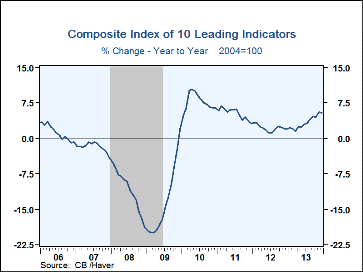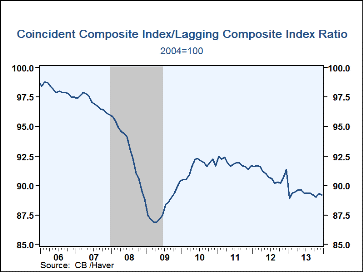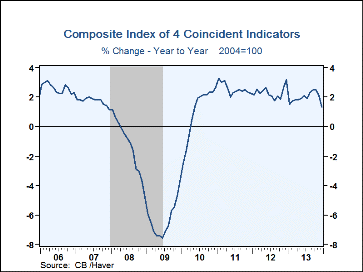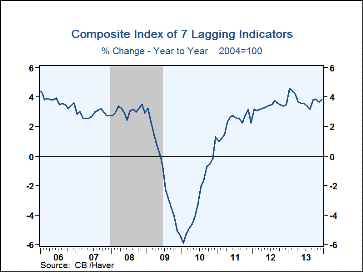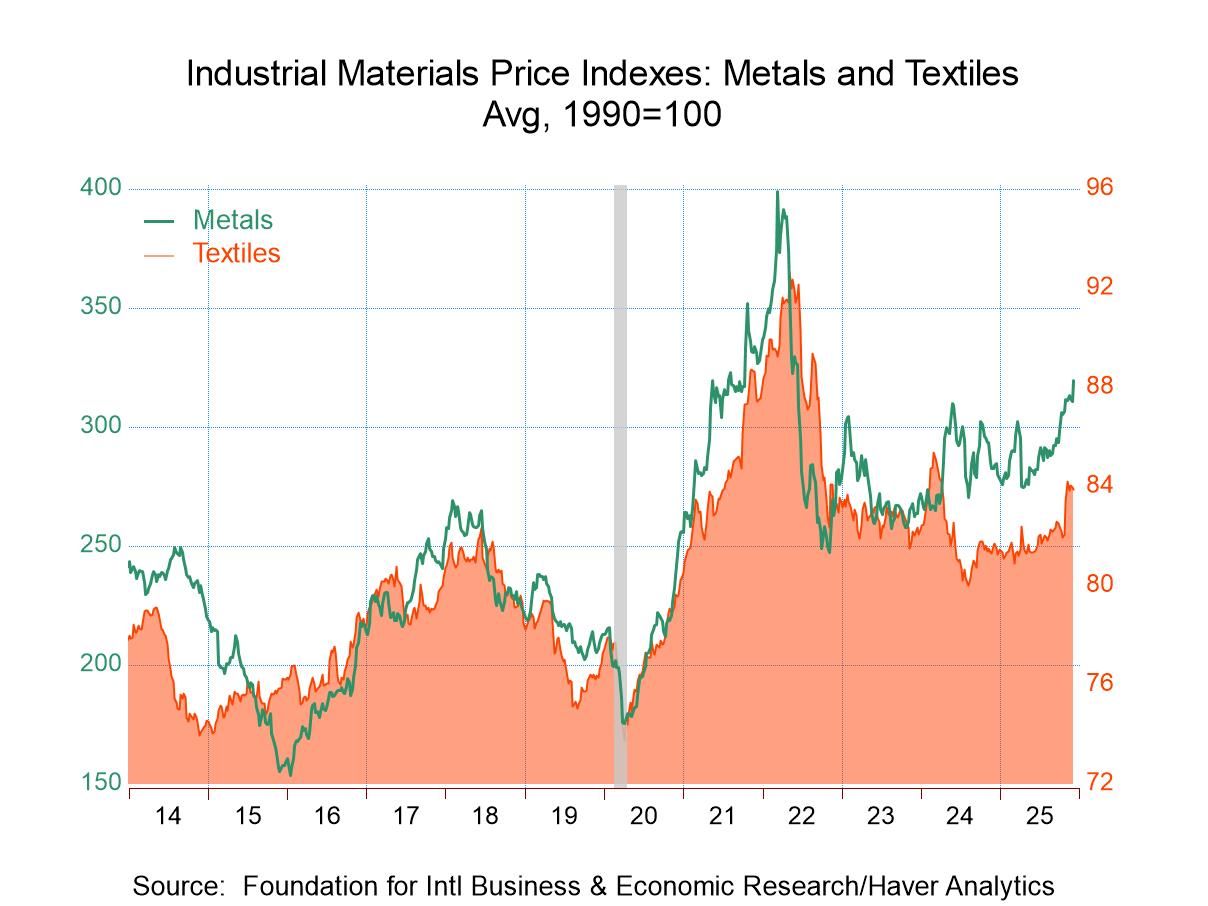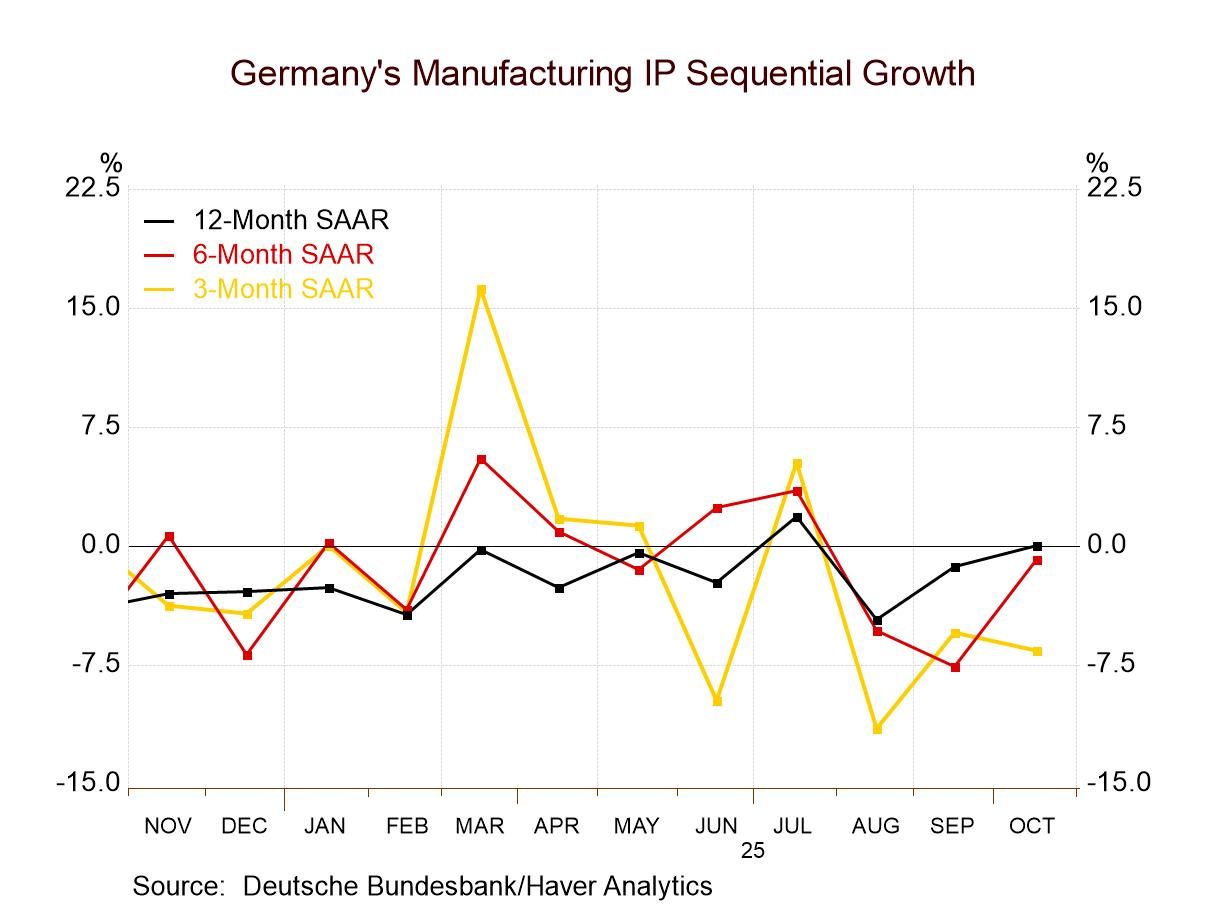 Global| Jan 23 2014
Global| Jan 23 2014U.S. Leading Economic Indicators Inch Higher M/M and Firm Y/Y
by:Tom Moeller
|in:Economy in Brief
Summary
The index of Leading Economic Indicators, published by the Conference Board, inched up 0.1% during December. That followed a 1.0% jump in November, revised from 0.8%, and missed the 0.2% expected gain in the Action Economics Forecast [...]
The index of Leading Economic Indicators, published by the Conference Board, inched up 0.1% during December. That followed a 1.0% jump in November, revised from 0.8%, and missed the 0.2% expected gain in the Action Economics Forecast Survey. The 5.4% twelve-month gain in the leaders was nearly the strongest since July 2011. The breadth of component increase fell to 55% last month. A steeper interest rate yield curve, an improved ISM new orders index, an increased leading credit index and higher stock prices worked to raise the leading index. Moving it lower were more claims for jobless insurance, fewer building permits, fewer nondefense capital goods orders and worsened consumer expectations for business conditions.
The ratio of coincident-to-lagging indicators, another leading indicator, slipped to 89.2 in December and remained in the weakened range maintained all throughout 2013. It measures how the economy is performing versus its excesses.
The index of coincident indicators rose 0.2% (1.3% y/y) after a 0.4% November increase. The full year gain of 2.0% was the weakest of the last three years. During December, all four component series rose -- payroll employment, personal income less transfers, manufacturing & trade sales and industrial production.
The index of lagging economic indicators improved 0.3% last month (3.9% y/y) following no change in November. For the year, the 3.8% increase was the strongest of the last three. Stronger gains in the ratio of consumer installment credit to personal income and commercial and industrial loans continued to lead the index higher.
The Conference Board figures are available in Haver's BCI database; the components are available there, and most are also in USECON. The forecast figures for the Consensus are in the AS1REPNA database. Visit the Conference Board's site for coverage of leading indicator series from around the world.
| Business Cycle Indicators (%) | Dec | Nov | Oct | Y/Y | 2013 | 2012 | 2011 |
|---|---|---|---|---|---|---|---|
| Leading | 0.1 | 1.0 | 0.1 | 5.4 | 3.4 | 2.2 | 5.3 |
| Coincident | 0.2 | 0.4 | 0.1 | 1.3 | 2.0 | 2.3 | 2.6 |
| Lagging | 0.3 | 0.0 | 0.3 | 3.9 | 3.8 | 3.4 | 2.3 |
Tom Moeller
AuthorMore in Author Profile »Prior to joining Haver Analytics in 2000, Mr. Moeller worked as the Economist at Chancellor Capital Management from 1985 to 1999. There, he developed comprehensive economic forecasts and interpreted economic data for equity and fixed income portfolio managers. Also at Chancellor, Mr. Moeller worked as an equity analyst and was responsible for researching and rating companies in the economically sensitive automobile and housing industries for investment in Chancellor’s equity portfolio. Prior to joining Chancellor, Mr. Moeller was an Economist at Citibank from 1979 to 1984. He also analyzed pricing behavior in the metals industry for the Council on Wage and Price Stability in Washington, D.C. In 1999, Mr. Moeller received the award for most accurate forecast from the Forecasters' Club of New York. From 1990 to 1992 he was President of the New York Association for Business Economists. Mr. Moeller earned an M.B.A. in Finance from Fordham University, where he graduated in 1987. He holds a Bachelor of Arts in Economics from George Washington University.


